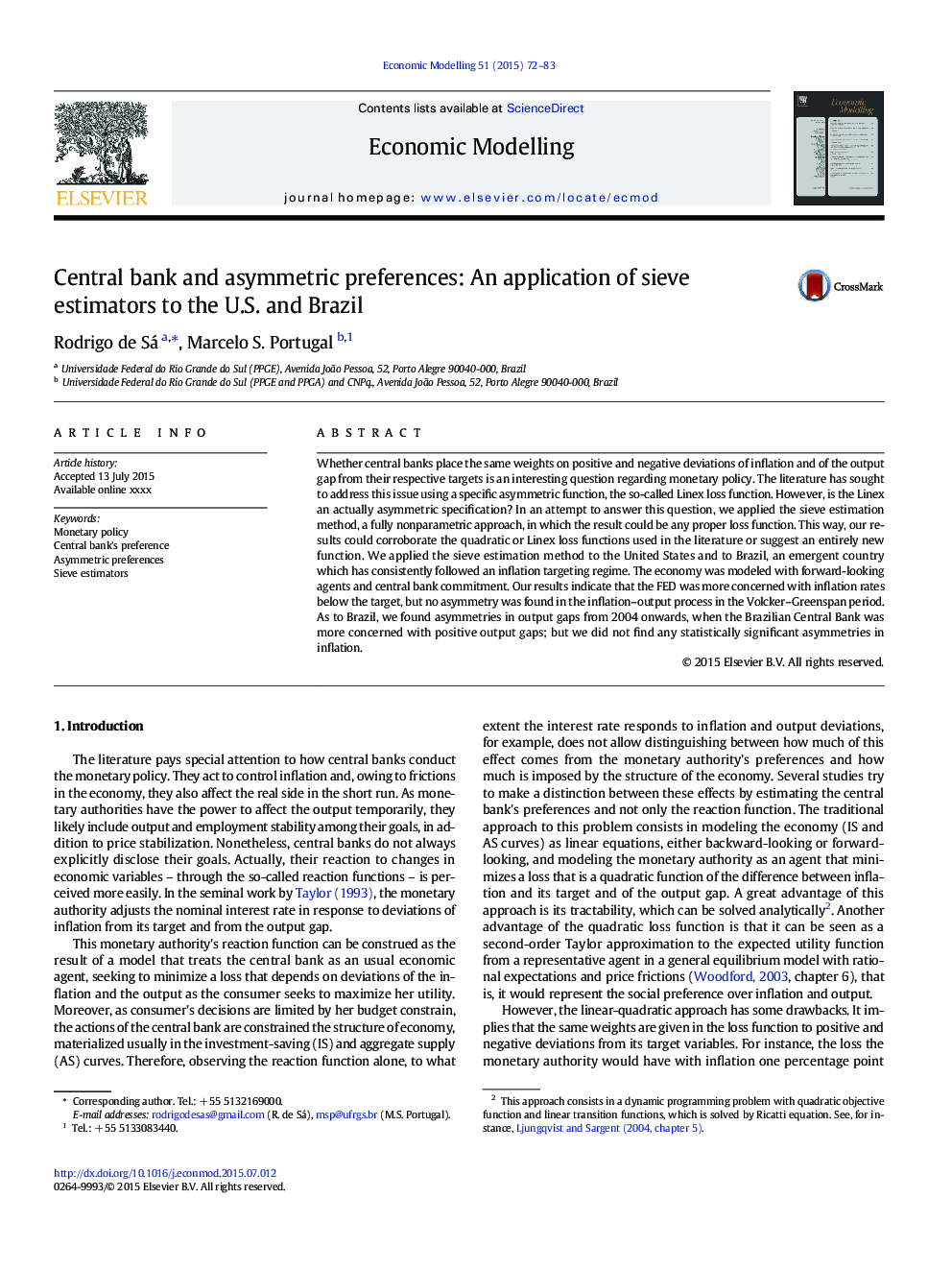| Article ID | Journal | Published Year | Pages | File Type |
|---|---|---|---|---|
| 5053707 | Economic Modelling | 2015 | 12 Pages |
Abstract
Whether central banks place the same weights on positive and negative deviations of inflation and of the output gap from their respective targets is an interesting question regarding monetary policy. The literature has sought to address this issue using a specific asymmetric function, the so-called Linex loss function. However, is the Linex an actually asymmetric specification? In an attempt to answer this question, we applied the sieve estimation method, a fully nonparametric approach, in which the result could be any proper loss function. This way, our results could corroborate the quadratic or Linex loss functions used in the literature or suggest an entirely new function. We applied the sieve estimation method to the United States and to Brazil, an emergent country which has consistently followed an inflation targeting regime. The economy was modeled with forward-looking agents and central bank commitment. Our results indicate that the FED was more concerned with inflation rates below the target, but no asymmetry was found in the inflation-output process in the Volcker-Greenspan period. As to Brazil, we found asymmetries in output gaps from 2004 onwards, when the Brazilian Central Bank was more concerned with positive output gaps; but we did not find any statistically significant asymmetries in inflation.
Related Topics
Social Sciences and Humanities
Economics, Econometrics and Finance
Economics and Econometrics
Authors
Rodrigo de Sá, Marcelo S. Portugal,
